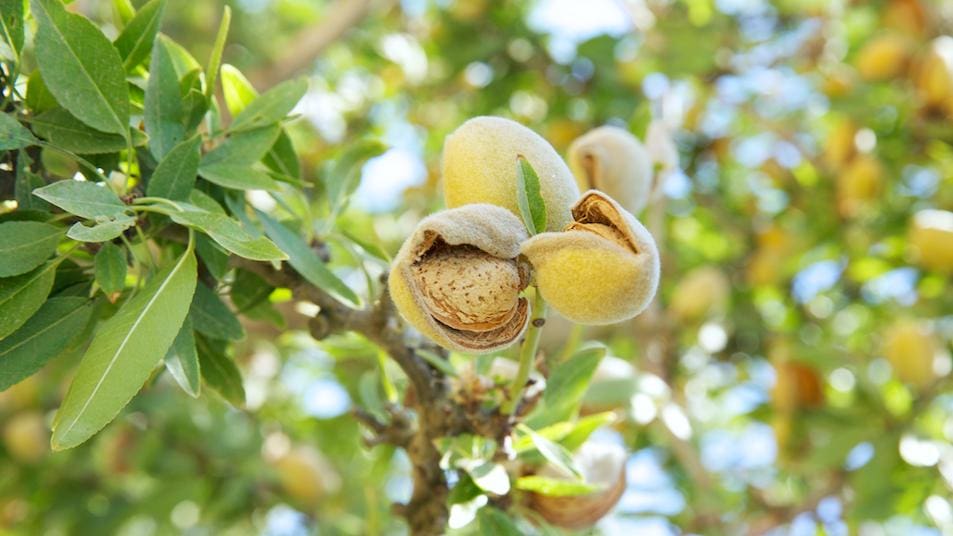
Post-Harvest Irrigation Management
Scheduling conflicts between custom harvest companies or labor shortages can also delay harvest and prolong dry conditions in the orchard. It is important for almond producers to be mindful of the stress they are exacting in their orchards and initiate irrigation ASAP and continue to schedule irrigations until abscission or senescence.
Irrigation is particularly important during the post-harvest period in almonds to maximize the production of photosynthates. Growers need to take full advantage of transpiration and photosynthesis throughout the remainder of the growing season to maximize carbohydrate production. Carbohydrate concentrations decline throughout the summer months as the tree feeds and sustains the crop going into harvest. Irrigation is needed to not only produce carbohydrates during this post-harvest period, but also needed to translocate carbohydrates from leaves to storage organs (roots) through transpiration. When irrigation is not a focus during this period, the result is often poor carbohydrate concentrations for the following bloom and leaf out period.
One of the best tools growers have to ensure proper irrigation management and scheduling during this period is Crop Evapotranspiration. It is important for growers to understand their irrigation system’s application rate to accurately reconcile the water they apply with the orchard’s water demand. It is common for growers to continue irrigating through October and perhaps longer depending on weather as we transition from Summer into Fall. Feel free to reach out to your local Wilbur Ellis representative to learn more about measuring application rates and/or scheduling irrigation after the completion of harvest.
Matt Comrey, Wilbur-Ellis Technical Nutrition Agronomist
